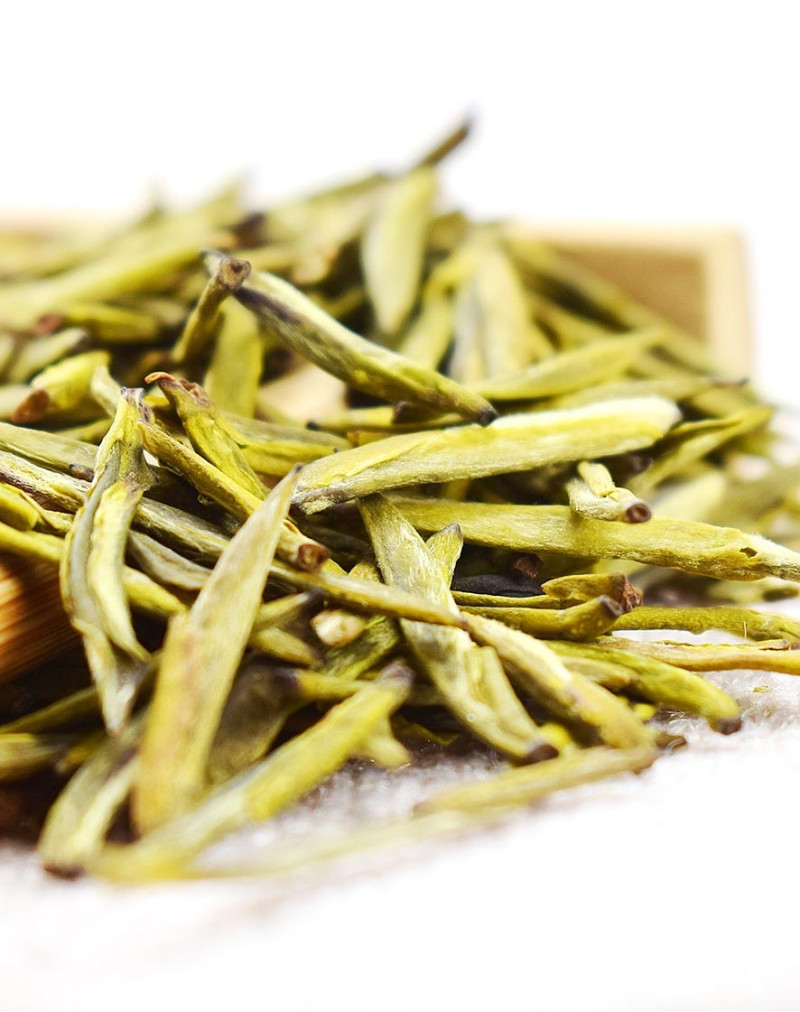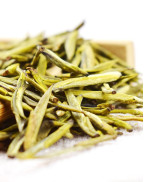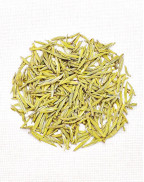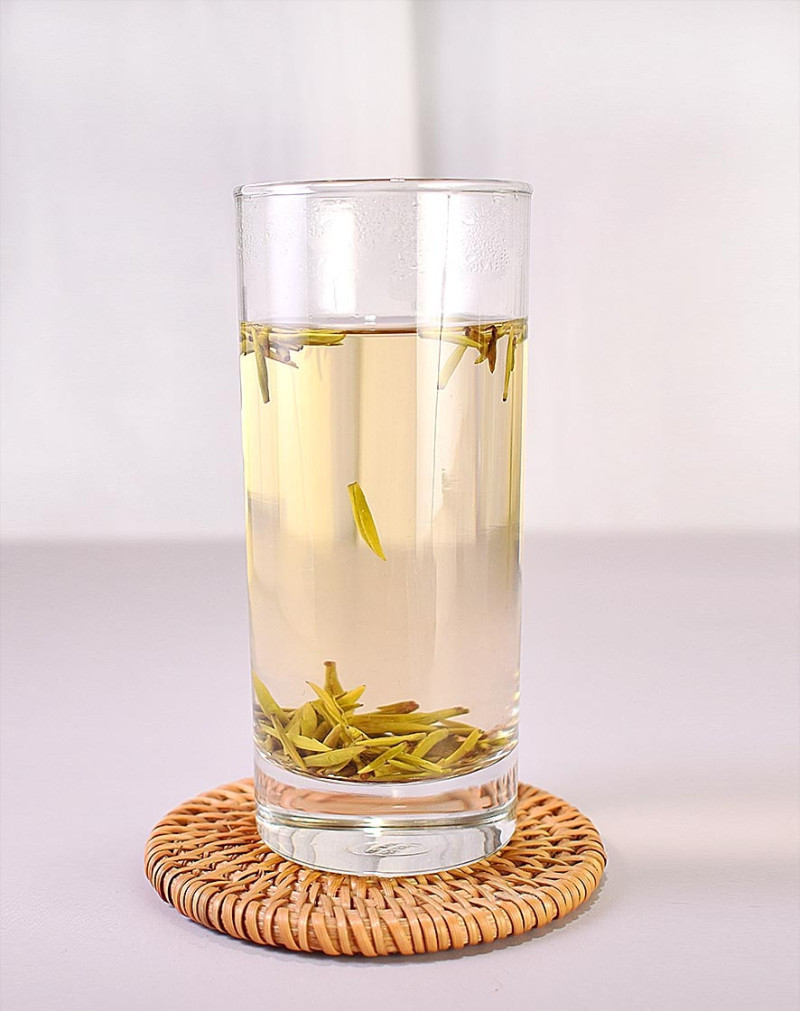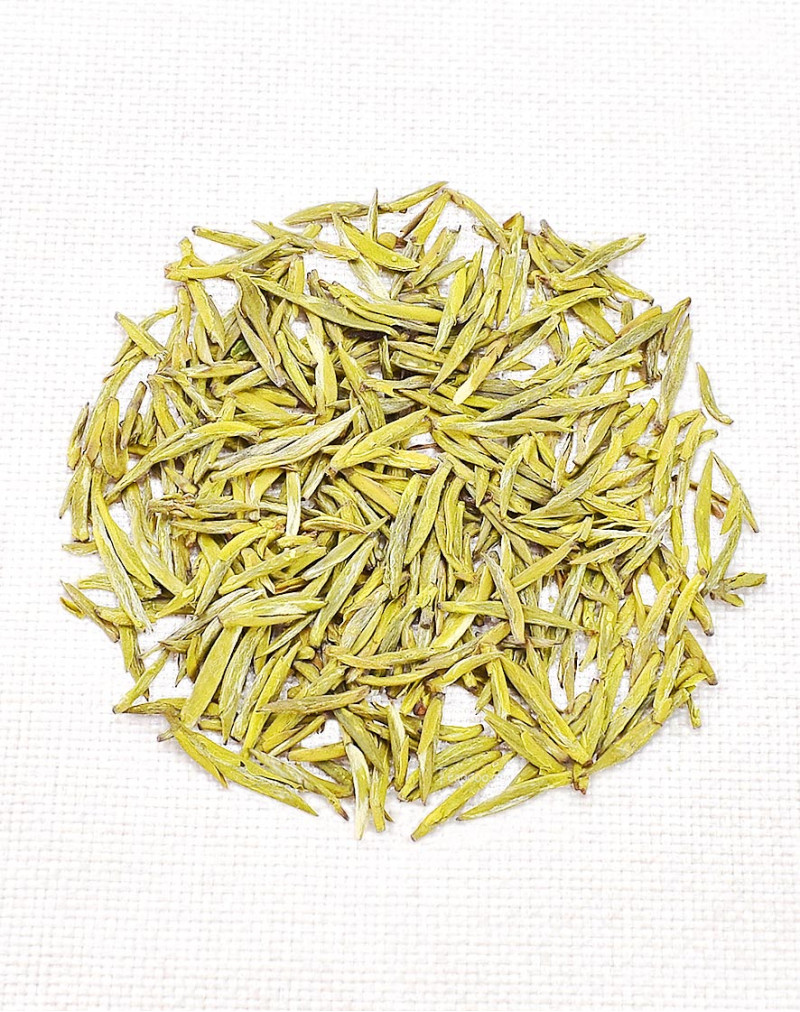Premium Mengding Yellow Bud Tea
- Product Code: simple
- Availability: In Stock
Basic Info
Name: Premium Mengding Yellow Bud Tea
Origin: Ya-an, Sichuan
Taste & Aroma: Fragrance aroma, refreshing, sweet aftertaste, mellow finish
Flavor: Unflavored
Item Form: Loose tea
Dry Leaf: Shinny, uniformly sized, covered with small white hair (down), downy
Liquor: Yellowish,clear and bright
Season: Spring tea
Tea Garden: Mengding DaGuang tea garden
Ingredients: 100% hand-picked natural tea buds and leaves
Storage: Stored in cool, airtight, opaque containers / Keep in the refrigerator at a low temperature
Caffeine: Low
Shelf Life: 18 months (refrigerated) / 12 months (room temperature)
Harvest Period: March 18, 2024
Premium Mengding Yellow Bud Tea
Mengding Yellow Bud tea (Mengding Huangya)tea is a rare and highly prized yellow tea that is produced in the Mengding Mountain region of Sichuan province, China. It is made from the young buds and leaves of the tea plant, which are carefully picked by hand in early spring.
Mengding tea refers to tea produced in Mengding Mountain, Ya 'an City, Sichuan Province. The production of Mengding tea began in the Western Han Dynasty, and it has a history of 2000 years. In ancient times, Mengding tea was used as a tribute tea to the Chinese emperors to enjoy. After the founding of the People's Republic of China, it was rated one of the "Top-10 Famous teas in China".
Mengding tea is the general name of teas made in Mengshan Mountains, Sichuan province, among which the 'Gan Lu tea 'and 'Yellow bud tea' are of the best quality. Mengding Mountain is part of the Qionglai Mountain range, which is located in Meishan and Ya 'an counties. Mengding tea has been a commodity in ancient times and there are many Chinese cultural celebrities in history who wrote a lot of poems and articles to praise the quality of Mengding tea.
The History of Yellow Tea
Yellow tea is a kind of tea that is slightly fermented. Its processing is similar to green tea, except that a "yellowing (sweltering)" process is added before or after the drying process.
Yellow tea has a long history, and its production history can be traced back to before the Tang dynasty (618-907). The following is some important stages of its development
1.Western Han Dynasty to Tang Dynasty
From the Western Han Dynasty (202 BC-8 AD) to the Tang Dynasty, the name of Huangya tea had appeared. At that time, there were mainly Mengding Huangya Tea and Huoshan Huangya Tea. Yueyang Yellow Tea and Huoshan Yellow Tea appeared in the history books of the Tang Dynasty. However, yellow tea at this time refers to those tea leaves whose buds turn yellow naturally.
2.Tang and Song Dynasties
Yellow tea was further developed in the Tang and Song Dynasty (960-1279). Mengding yellow tea, Huoshan yellow tea and Agrihu paste are three recorded yellow tea tribute teas in Tang Dynasty.
3.The Ming Dynasty
By the time of Ming Dynasty (1368 -1644), the technology of "yellowing (sweltering)" yellow tea had been applied to the process of tea making. At that time, people slowly groped and invented a new tea - - Mengding Yellow Bud tea, which is easy to preserve by using the combination of "fried yellow" and "stifled yellowing".
4.The Qing Dynasty (1636 - 1912)
The Qing Dynasty was the peak of the development of yellow tea in China.
During this period, the production technology of yellow tea has been widely spread, and yellow tea technology independently developed in many places has also begun to mature. Tea workers in many places in China produce various kinds of yellow teas.
5.1920s - 1950s
During the Republic of China, black tea and green tea were the main varieties of tea exports to earn foreign exchange. Coupled with the frequent wars in China, many yellow teas disappeared from the public's view.
6. 1950 -
Since 1950s, under the influence of the planned economy policies at that time, people in many tea-growing areas began to produce black tea, and the output of yellow tea was further reduced. At the same time, many related techniques for making yellow tea have also begun to be lost. In the 1970s, only Junshan Yinzhen, Weishan Maojian and Huoshan Huangcha were produced. Since 1980s, with the development of the tea industry, the variety and production scale of yellow tea have gradually recovered, the output has increased year by year and the market has gradually expanded. But in general, the production scale of yellow tea is still lower than that of other teas.
The geographical location of Mt. Mengding
Mengding Mountain is located in the western edge of the Sichuan Basin, the transition zone from the Qinghai-Tibet Plateau to the western Sichuan plain, between the so-called "Rain City" Ya 'an city and Mingshan City. Mengding Mountain is shrouded in mist all year round, with many high mountains and perilous peaks, and many waterfalls.Mengding Mountain and the surrounding areas are very suitable for the growth of high-quality tea.
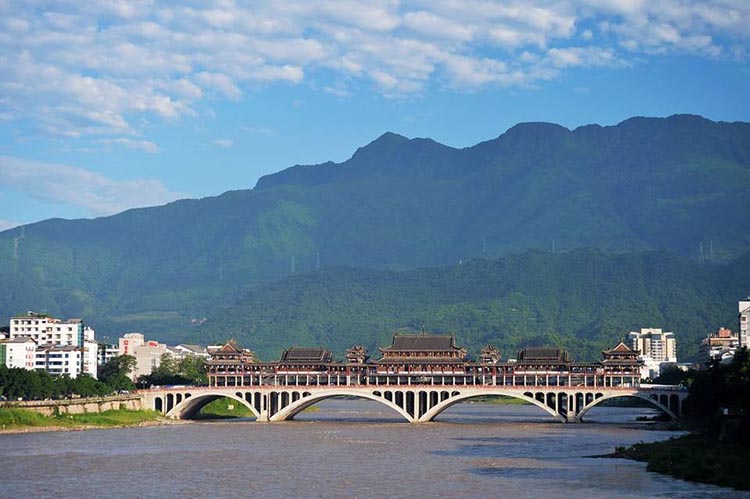
Show Full Description
Mengding Mountain is a famous scenic spot, with five famous peaks: Shangqing, Lingjiao, Biruo, Jing Quan and Ganlu, also known as the Five Peaks of Mengding. From a distance, these five peaks look like lotus flowers. The highest mountain, Shangqing Peak, is 1,456 meters above sea level. The total area of Mengding Mountain Scenic Area is 54 square kilometers. Mengding Mountain is named after the rainy weather all year round. The Chinese character "Meng" means "blurred vision" due to frequent rainfall. Mengding Mountain Scenic Area consists of two main scenic spots, Mengshan and Baizhang Lake.
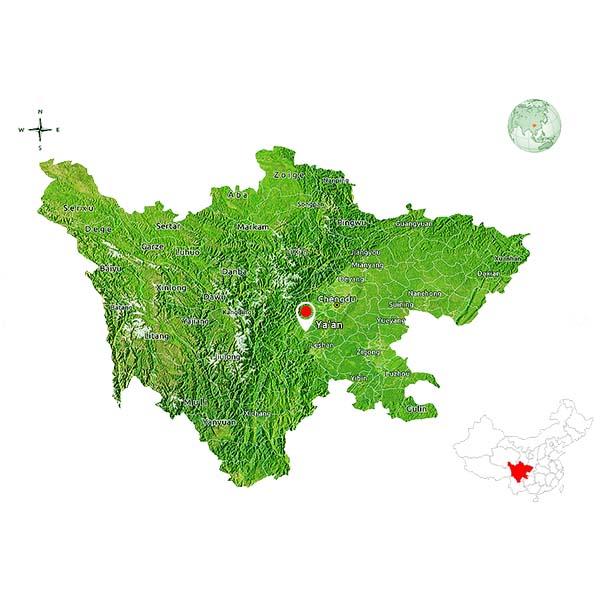
The relationship between Mengding Mountain and tea is a long and storied one, with a
history that stretches back centuries. Today, the tea produced in this region continues to be highly sought
after by tea aficionados, and Mengding Mountain remains a symbol of the rich cultural heritage and quality
associated with Chinese tea.
Ya 'an city : Giant Panda, tea culture and the Ancient Tea Horse Road
Ya 'an city : Giant Panda, tea culture and the Ancient Tea Horse Road
Ya 'an, located near 30 degrees north latitude, is a mysterious ancient city in China. The history of human activities in Ya 'an can be traced back to the Paleolithic Age. In 53 BC, Wu Lizhen, a tea farmer, began to plant tea artificially in Mengding Mountain of Ya 'an, bringing tea from the mountains forest to the homes of ordinary people, and from there, she went to the world from China.
Wu Lizhen is regarded as the earliest tea grower in China and even in the world with clear written records, so he
is also known as the ancestor of Mengding Mountain tea and the master of tea ceremony.
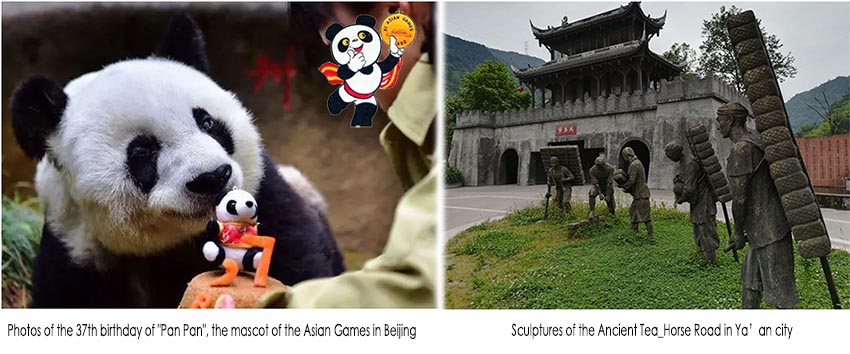
Giant panda and ancient tea horse road
The giant panda was first discovered in 1869 by French missionary Armand Davy in the jungles of Ya 'an in southwest China. Since then, the giant panda has entered human civilization, and has become "national treasure" and "living fossil" of China, which has won the love of people all over the world.
Basi, the prototype of Pan Pan, the mascot of the 1990 Beijing Asian Games, was born in Baoxing, Ya 'an, Sichuan in 1980. Ji Ji, the model of the World Wide Fund for Nature (WWF) logo and flag, is also from Ya 'an. So it is true that Ya 'an is the hometown of giant pandas. In fact, in addition to the lovely giant pandas, the low-key Ya 'an city is also the birthplace of the world's tea culture, the main passage of China's "Southern Silk Road" and the starting point of the famous"Ancient Sichuan-Tibet Tea and Horse Road".
Simple process of making Meng Ding Yellow Bud tea:
The production process of Mengding Yellow Bud Tea is basically similar to that of green tea, except that one step
is added (wrapping-yellowing or Heaping for Yellow). The wrapping-yellowing processing technology is unique to
yellow tea, and it is a key step to form the quality of yellow tea. In fact, it is composed of several small
steps.
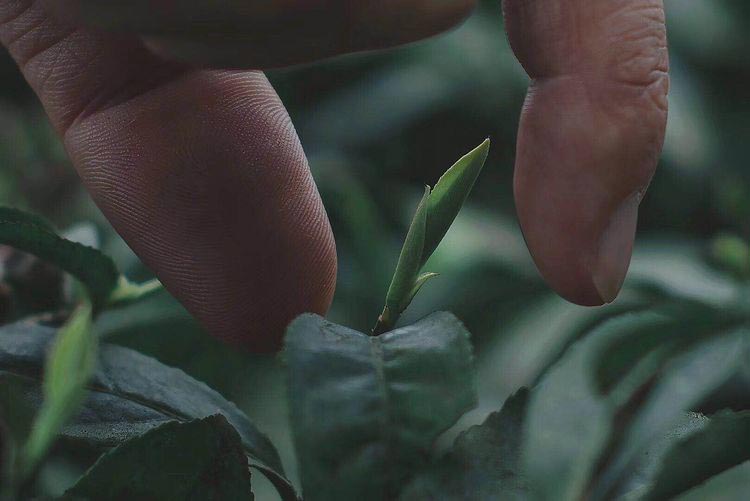
Picking: Mengding Yellow Bud tea is picked during the Spring equinox, when 10 percent of the bud head are spread out. There are strict requirements for making yellow buds: only round, single bud and buds with one leaf can be harvested.
Withering: In order to increase the softness of the tea.
Fixation / Oxidation Stop: Like green tea, Meng Ding Yellow Bud tea basically doesn't allow oxidation. In order to stop the oxidation process, this step can be completed by removing the water from the leaves in a frying wok at a temperature between 100℃ to 130℃.
Wrapping-yellowing: After Fixation, the leaves will be quickly wrapped with rough straw paper and placed somewhere for 60 ~ 80 minutes under temperature about 55℃ to accelerate the yellowing process.
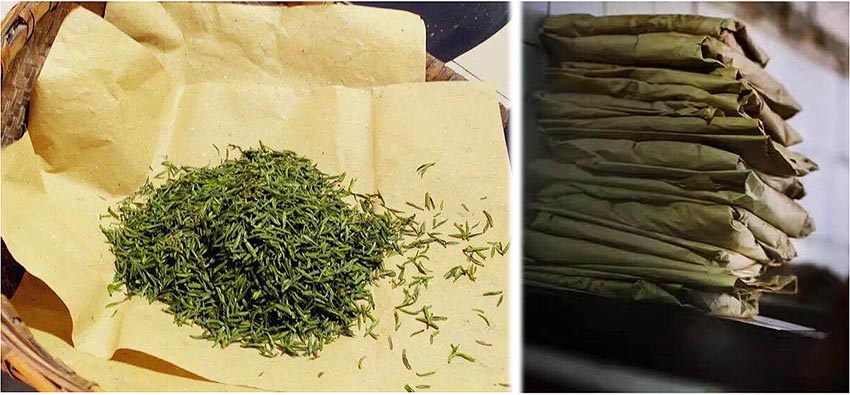
Drying: The final step takes place at rather low temperatures (approx. 40~50℃) and in a correspondingly gentle manner to keep its shape for enjoying and preservation.
Characteristics
The flat and straight leaves of Meng Ding Yellow Bud tea are covered by hairy tips. When steeping, It is firstly tasted mellow with strong fragrance followed by sweet aftertaste quickly rise from the throat and a mellow finish. The fine Meng Ding Yellow Bud leaves are uniformly sized which can produce a clear, yellow-greenish brew with fresh flavor.
About production standards
There was no complete authoritative standard for making Mengding Yellow Bud tea. The forming of national standards for yellow bud tea is a time-consuming and laborious process. In 1964, tea experts gathered the most experienced yellow tea producers together and divided them into groups of 3-4 people to record their tea-making process in detail. Then let the judges taste their finished products one by one, and finally select the best group, and kept its processing data for analysis. This process was repeated thousands of times, and a large number of production data was compared and analyzed before the national production standard of Mengding yellow bud tea was finally formulated.
| Chinese Gongfu Method | |
| Tea | 4g |
| Water | Gaiwan 3oz / 90ml |
| Time | 4 infusions (15s,35s,1m10s,2m10s) |
| Temperature | 80°c / 176℉ |
| Teapot Method | |
| Tea | 8g |
| Water | Teapot (8oz / 240ml) |
| Time | 1- 4mins |
| Temperature | 80°c / 176℉ |


